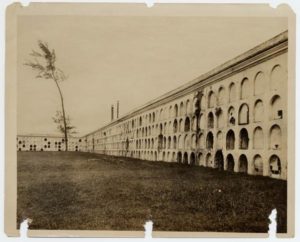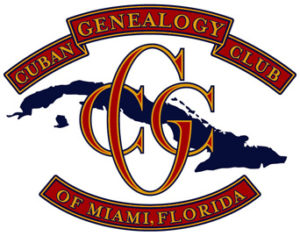Cemeteries
All Provinces
Colon Cemetery
El Cementerio de Cristóbal Colón, also called La Necrópolis de Cristóbal Colón, was founded in 1871 in the Vedado neighborhood of Havana, Cuba to replace the Espada Cemetery in the Barrio de San Lázaro. Named for Christopher Columbus, the cemetery is noted for its many elaborately sculpted memorials. It is estimated the cemetery has more than 500 major mausoleums. Before the Espada Cemetery and the Colon Cemetery were built, interments took place in crypts at the various churches throughout Havana, for example, at the Havana Cathedral or church crypts in Havana Vieja.
Source: Steward-de Jaham Genealogy Pages
IMPORTANT: These files are for personal use only! The use of the information on this site for commercial, political, or any other purpose other than research of your family history and genealogy is strictly forbidden.
Please contact, and credit, the CGC prior to using any part of this collection by sending an email to secretary@cubangenclub.org.

Espada Cemetery - In use from 1806 to 1878
After the conquest of the New World and as the population grew, burial space at churches became very scarce. During the government of Don Salvador de Muro y Salazar, Marquis of Someruelos, Bishop José Díaz de Espada y Landa financed the construction of a large cemetery in a lot donated by Francisco Teneza Rubira. The area was located one mile to the west of the city of Havana, near the coast and next to San Lázaro Hospital. Its boundaries included the present streets of San Lázaro, Vapor, Espada, and Aramburu. Construction on the site lasted for two years and it was finally inaugurated on February 2, 1806. Even though the cemetery was given the official name of “Campo Santo” (Holy Field), it was always known as “el cementerio Espada”, the Espada Cemetery.
The large number of victims from the cholera epidemic circa 1868 did not allow for more plots at the Espada Cemetery, except for those buried in niches or crypts. In 1871, the new Colón Cemetery was inaugurated and in 1878, the Espada Cemetery was closed due to the population growth and its location within the city limits.
The book, Guía del Cementerio de la Habana, published in 1868 by Pujol y Compañía, lists thousands of people buried in the now defunct Espada Cemetery. Many of these inscriptions have a wealth of information including dates of birth, age at time of death, and sometimes even the name of the deceased’s spouse, child, or parent. In order to make this information available to everyone interested in Cuban genealogy, the Cuban Genealogy Club of Miami, Florida, decided to undertake its first transcription project, now known as “The Espada Project”. We hope the work of our club members will assist you in your search for your ancestors. Please be sure to let us know if you find one of your family members in this database!
The CGC Board would like to thank the following group of transcribers for volunteering their time and sharing their passion for genealogy in this important task: Annette Baquedano, Edward Báez, Susan Conner, Lourdes del Pino, Lupe Díaz, Mariela Fernández, Jorge Flores, Eddie Ramos, Carmen Roque, Juan Sardiñas, Marie Zaret, and Martha Ibañez Zervoudakis.
Surnames in the Guía del Cementerio de la Habana Published in 1868 by Pujol y Compañía

Other Online Cuban Cemetery Records
Thanks to the efforts of volunteers, such as DigitalCuba.org, there are over 7,000 images of Cuban gravestones on Findagrave.com
